Lesson 1 - Statistical Energy Analysis: theory and applications

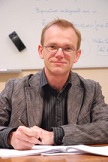
Abstract:
Statistical energy analysis (SEA) is a well-known method in the field of high frequency vibrations. This method is founded on an analogy with thermodynamics. The spirit and methods of SEA are largely inspired from statistical mechanics. The theory, developed in the sixties, is a statistical theory of sound and vibration.
In this lesson, we present the foundations of SEA and its underlying assumptions such as rain-on-the-roof excitation, light coupling, diffuse field, equipartition of energy.
After a short presentation of the field, the lesson focuses on the main result of SEA: the coupling power proportionality.
The proof that the energy exchanged in coupled oscillators is proportional to the difference of vibrational energies is given in details. A generalization to groups of oscillators, and then, to continuous subsystems is presented.Other outlined topics are the equality of kinetic and elastic energies, asymptotic formula for modal densities and injected power.
The coupling loss factors are calculated by the wave approach of SEA.
Finally, the method to predict the vibrational energies leads on application of the first principle of thermodynamics on individual subsystems. Further results are mentioned on thermodynamics and SEA such as the second principle of thermodynamics and the concept of vibrational entropy.
Lesson 2 - Developments of SEA: variance prediction and coupled SEA-FE models in vibro-acoustics and electromagnetics
The presentation may be requested by email to the presenter
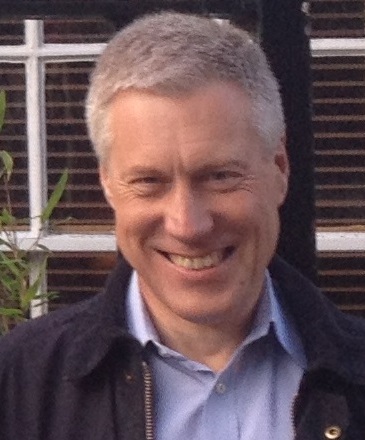
Abstract:
Statistical Energy Analysis was initially developed to predict the energy distribution in complex vibro-acoustic systems by considering the conservation of energy flow. The word “statistical” is an essential descriptor of the method and the type of problem addressed: the method considers a random ensemble of systems (for example, a set of cars from a production line) and predicts the ensemble average distribution of energy. Any given system (for example a particular car) may have an energy distribution which differs significantly from the ensemble average, and for this reason it is also extremely valuable to predict the ensemble variance of the energy distribution, and ultimately the probability density function of the energies. If this can be done, then extreme values of the response of the system and confidence intervals can be predicted. This lecture will demonstrate how SEA can be extended to variance prediction and confidence intervals, and this will include a discussion of the concepts of universality and the Gaussian Orthogonal Ensemble. The lecture will then show how SEA can be coupled to the finite element method to produce an analysis method that simultaneously employs energy variables and displacement variables. This approach is used extensively in industry, and a range of examples will be given, drawn from the fields of vibro-acoustics and electromagnetics.
Lesson 3 - Statistical modal Energy distribution Analysis (SmEdA)

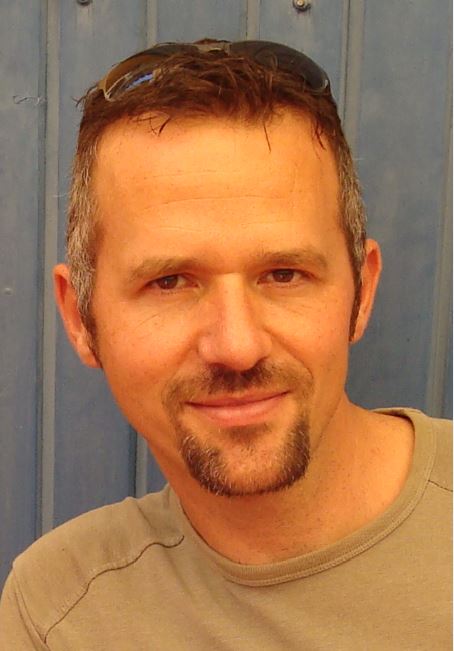 Abstract:
Abstract:
Statistical modal energy distribution analysis (SmEdA) constitutes an extension to the mid frequency range of classical statistical energy analysis (SEA) as it circumvents the modal energies equipartition assumption. It results several advantages: (a), unlike classical SEA, it permits dealing with subsystems with low modal overlap, driven by localized excitations or with heterogeneous mechanical properties; (b), it uses modal bases of uncoupled subsystems. These bases can be evaluated by using Finite Element models which permits dealing with subsystems of complex geometry. When modal energy equipartition is assumed in SmEdA, the SEA Coupling Loss Factors (CLF) can be deduced without any numerical matrix inversion. This parameter is directly estimated from an analytical expression depending on the modal information (i.e. natural frequency, modal damping, mode shape) of each uncoupled subsystem; (c), non-resonant transmission can be modelled with SmEdA; (d), Hybrid SEA/SmEdA models can be built in order to describe the modal energy distribution only in subsystems where it is necessary and use SEA for others subsystems. Theoretical formulation, assumptions, limitations and examples of practical application will be presented during this lecture. Recent developments concerning the prediction of the spatial distribution of the energy density inside each subsystem and for taking into account dissipative treatments (like viscous layers or absorbing materials) will be proposed.
Lesson 4 - Statistical Energy Analysis made simple, and difficulties with strong coupling

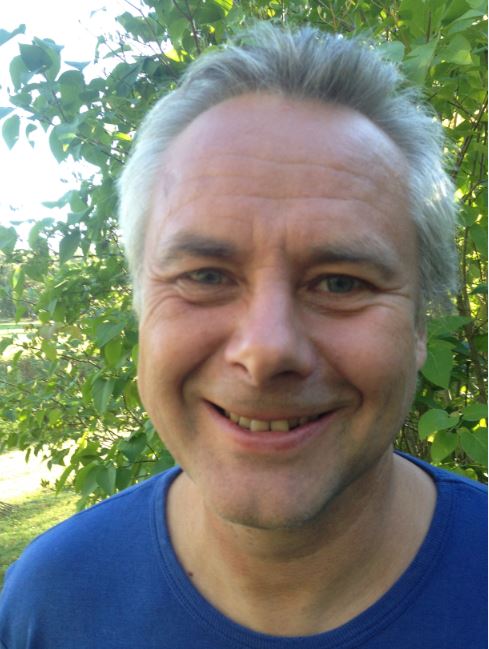
Abstract:
This lecture first introduces notation and concepts used in a “standard” SEA formulation. It focuses on one-way methods in which the field in one system is a given quantity and the coupling losses are found via characteristics such as “reductions index” and “radiation efficiency. Examples from the literature show that all, but a few, demonstrations of the fundamental “coupling power proportionality” (CPP) use such one-way methods. Upon this basis, the calculation of vibration transmission in a wind tunnel and sound transmission loss of railway car base frames are shown. In both cases, the critical step is the definition of the calculation templates, and once these are defined, the rest is easy and the results are useful.
The “modal interaction strength” is then introduced in a study of transient and harmonic vibration of two-oscillator structures. Frequency and ensemble averages are compared to one-way solutions and limits for the CPP applied to general systems are discussed. This area is still subject for research and debate. An assortment of observations and ideas will be presented; the final content is probably defined during the lecture.
Lesson 5 - SEA prediction and analysis of complex industrial systems

 Abstract:
Abstract:
SEA is a well-suited method to analyze the complex broadband dynamic of cars, trains, aircraft, ships and most of vibrating industrial systems of which vibratory response is dominated by resonant modes. To build robust SEA models, representative of the actual behavior, three major steps are required: substructuring into "SEA compatible" subsystems, selecting theoretical description of subsystems and junctions from SEA software library, entering description of actual operating loads.
Because of the inherent SEA-theory, assumptions, quality of outputs delivered by SEA models have to be carefully checked, at least when modeling new class of system where related engineering background is low. Validations are performed with ExperimentalSEA test method, very efficient in correlating observed and simulated results. In the design phase where no test data is available model, VirtualSEA method may replace testing as it transforms Finite Element (FEM) models of the system into SEA set of coupled subsystems, with automatic identification of their partition, coupling loss factors and modal density.
Examples of industrial SEA model realization in different domains (car, building acoustic, aerospace…) will be presented with their validation.
Lesson 6 - Graph theory to compute energy flow paths in mid and high frequency vibroacoustics modelling
The presentation may be requested by email to the presenter
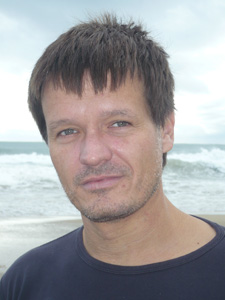 Abstract:
Abstract:
Energy transmission path analysis (TPA) is a well-established technique useful for pinpointing vibroacoustic problems in structures and undertaking remedial actions. In this lecture we will show the conditions under which TPA makes sense for general energy distribution (ED) models, often used to characterize the vibroacoustic behaviour of structures in the mid and high frequency ranges. Whenever the conditions for TPA are met, it becomes possible to associate a graph to the ED model and to resort to graph theory algorithms for a very fast computation and ranking of the dominant energy flow paths from sources to receivers. We will show how this works for two particular theories. The first one is statistical energy analysis (SEA), used for the high frequency limit, and where energy flow paths can be established between subsystems. The second one is statistical modal energy distribution analysis (SmEdA), which extends to the mid frequency range by circumventing some of the restrictive hypotheses of SEA, like modal energy equipartition. In SmEdA energy flow paths can be established between the modes (both resonant and non-resonant) in different subsystems. Several examples will be used to illustrate all exposed concepts.
Lesson 7 - Finite Element Methods in Mid-Frequency Range
The presentation may be requested by email to the presenter
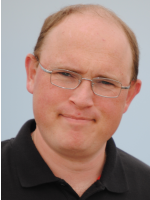 Abstract:
Abstract:
The FEA and SEA methods are widely used for solving vibro-acoustic problems in the so-called low and high frequency ranges, respectively. However, there are currently no well-established approaches for dealing with the mid-frequency range. A postulate that has emerged in the scientific community is that the mid-frequency gap can be filled by extending the validity limits of both the FEA and SEA techniques. In particular, the upper bound of the FEA application range can be increased 1) by resorting to efficient numerical codes and computing infrastructures and 2) by selecting averaged response indicators. In fact, due to the sensitivity of the system response w.r.t. material and geometrical parameters when the frequency increases, local response indicators are not pertinent anymore and there is a need to perform frequency and spatial result averaging and/or to resort to sensitivity analysis or non-deterministic approaches.
In this lesson, we describe how elementary tools and concepts can be brought together with a finite element model in modal coordinates to setup an energetic post-processing tool that provides pertinent results in the mid-frequency range. An introduction to non-deterministic approaches, including parametric and non-parametric variability representations, is given. The applicability of the presented approaches to industrial models is also discussed, with a particular focus on high-performance computing concerns. Numerical applications, supported by an implementation within the finite element frameworks provided by Nastran and Actran softwares, are shown and illustrate the presented approaches and concepts.
Lesson 8 - The complex envelope displacement analysis and the complex envelope vectorization method for medium and high frequency problems

 Abstract:
Abstract:
Several methods have been proposed in the last thirty years as alternative to Statistical Energy Analysis (SEA) to modeling high frequency vibrations and vibro-acoustic problems.
Many of them are quite promising although none has yet reached a totally acceptable level for applications of practical interest. The general approach of these methods uses a variable transformation: because of the large discretization required to solve numerically high frequency problems, the physical variable, either displacement for a structure or pressure for an acoustic medium, is replaced by some kind of average energy. This transformation is generally more convenient from a numerical point of view and more significant for structures characterized by unavoidable uncertainties in the physical and geometrical parameters.
One of these methods is the Complex Envelope Displacement Analysis (CEDA).
Unlike most other high frequency techniques (SEA , vibration conductivity methods, wave intensity analysis, etc.), the new used variable is not the energy but rather a complex envelope displacement defined through the Hilbert transform. This transformation maps the fast oscillating response of high frequency problems into an ”envelope” response characterized by a low wavenumber content and a new formulation, computationally more efficient, is obtained. Unlike SEA, but in analogy with vibration conductivity methods and others, CEDA provides a local information on the variable along the structure and presents other important advantages over the energy methods.
The complex envelope vectorization (CEV) is an evolution of CEDA that is very successful to deal with one-dimensional systems, but cannot be straightforwardly extended to higher dimensional problems. CEV uses a discrete formulation of the dynamic problem (e.g. a vibrating structure or a vibro-acoustic cavity), e.g. obtained by a FEM or BEM formulation, so that the response of the system is described by a vector. This vector can be regarded as the discrete counterpart of a one-dimensional variable to which the standard definitions and rules used in the one-dimensional CEDA can be applied. In general this procedure fulfils the features expected from the original CEDA, i.e. it is capable of describing the space response at high frequencies with a low computational effort, especially in the case of the BEM formulation, where the solution matrices are generally full.
The method has been the subject of several prior investigations in the past years and recently was applied to real cases met in design of car acoustics.
Lesson 9 - Dynamical energy analysis and discrete flow mapping
The presentation may be requested by email to the presenter

Abstract:
This lecture will start by discussing a ray based methodology for high frequency vibro-acoustic modelling called dynamical energy analysis. The second part of the lecture will describe discrete flow mapping from a practical viewpoint, which is an efficient implementation of dynamical energy analysis on a grid of triangular elements. A small scale example will be described in detail, whilst pointing out generalisations for scaling up to more complex structures. The lecture will finish by discussing extensions to mid-frequency problems using ray and wave scattering theory.
Lesson 10 - The Wave Based Method for mid-frequency structural acoustics
The presentation may be requested by email to the presenter
 Abstract:
Abstract:
The Wave Based Method is a deterministic prediction technique to solve steady-state dynamic problems and is developed to overcome some of the frequency limitations imposed by element-based prediction techniques. The method belongs to the family of indirect Trefftz approaches and uses a weighted sum of so-called wave functions, which are exact solutions of the governing partial differential equations, to approximate the dynamic field variables. By minimising the errors on boundary and interface conditions, a system of equations is obtained which can be solved for the unknown contribution factors of each wave function. As a result, the system of equations is smaller and a higher convergence rate and lower computational loads are obtained as compared to conventional prediction techniques, such as the Finite Element Method. On the other hand, the method shows its full efficiency for rather moderately complex geometries.
As a result, the method has been applied to a number of physical problems in the field of structural acoustics, such as steady-state acoustics, plate bending and the modelling of poroelastic materials. Moreover, various enhancements have been made through the years to further extend the applicability of the Wave Based Method, such as hybrid and multi-level approaches.
Lesson 11 - Trefftz and Weak Trefftz methods for the resolution of medium frequency problems

 Abstract:
Abstract:
The wave methods have been recently widely studied, for the analysis of medium frequency problems and the resolution of the limitations of the finite element methods (FEM). Also known as 'Trefftz methods', they use waves as shape functions, or more generally any kind of functions that satisfies the governing equation with a strong mechanical content. The goal of this course is to explain in details one of this wave approach, whose name is the Variational Theory of Complex Rays (VTCR), developed twenty years ago, and now able to solve structural and acoustical vibration problems in the medium frequency range, on complex structures. The content of the course will focus on the position of this method in the state of the art of wave methods, the mathematical development and the physical properties of the VTCR solutions, and the type of example that one can consider. Moreover, one part of the course will also focus on the development of hybrid methods, mixing FEM and VTCR solution. Such methods are useful for the prediction of the vibrational responses of complex systems, combining low and medium frequency behaviors. Also know a 'Weak Trefftz methods', they can gather the properties of each computational strategy, and correspond to a new way of calculation of mechanical problems. Mathematical properties and numerical examples will illustrate this.
Lesson 12 - Wave and energies through finite element
The presentation may be requested by email to the presenter
 Abstract:
Abstract:
This talk is concerned with wave propagation in complex viscoelastic structures with or without fluid. A numerical finite element based approach named Wave Finite Element (WFE) is further developed. Analysis of one and two dimensional problems are considered. Diffusion matrix prediction through a full numerical scheme is proposed and extended. The applicability of the WFE for the low and mid-frequency description of coupled systems is considered. Analysis of coupled structures through a notch is also treated numerically. The numerical experiments offered prove the interest of the WFE for many structural wave studies.
Lesson 13 - How to validate a method in the mid frequency range?


Abstract:
The reference method for the low-frequency range is without contest the Finite Element Method; in the high frequency range the reference is the Statistical Energy Analysis. But in the domain of mid-frequency there is not such a well-established method. Therefore the validation of a numerical method in this range of frequency is not an easy task. In this course we will explore how such a validation can be done using FE and SEA. Such a comparison as to be done with care and present two main difficulties. First, the conditions of validity of the method have to be fulfilled. For instance, in the case of Finite Element, the mesh density has to be controlled to ensure the convergence of the method. The second one is that the two methods have to solve the same problem. For example, when using the SEA as a reference, one has to compare the results obtain across an ensemble of system, and not one single realisation. This will be illustrated on several examples obtain with the WBM or the VTCR.



















